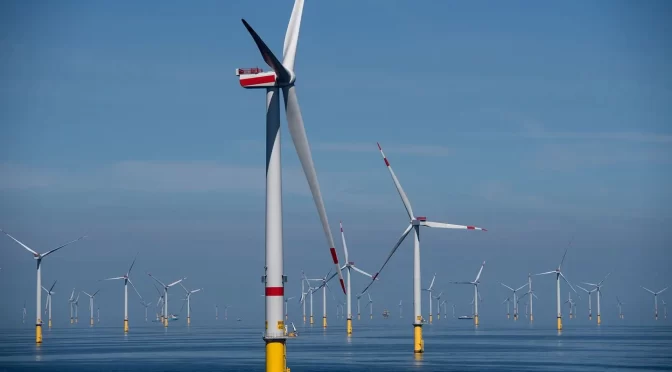Lease sale generated a grand total of $4.37 Billion for the U.S. Treasury. Tens of thousands of jobs to be created during development of leases and projects
Once developed, 5.6 – 7 gigawatts of wind power, enough energy for over 2 million homes.
The American Clean Power Association (ACP) applauds the Department of Interior and the Bureau of Ocean Energy Management (BOEM) for holding a historic wind energy lease sale that will create tens of thousands of high-skilled U.S. jobs, strengthen coastal economies, and deliver vast amounts of reliable, clean energy to America’s largest population centers.
The offshore wind energy lease sale conducted by BOEM generated $4.37 billion in revenue that will go to the U.S. Treasury.
The lease sale is a critical step to meeting the U.S. goal of deploying 30 gigawatts (GW) of offshore wind energy by 2030, which could create up to 83,000 jobs and $25 billion in annual economic output. The U.S. offshore wind industry is investing billions of dollars in a domestic supply chain, including investments in fabrication facilities, port upgrades, vessels, and workforce training.
“The scale of this lease sale is historic and shows the strong demand for clean energy. Development from this sale will create and support tens of thousands of new domestic jobs and help to revitalize our coastal communities,” said Heather Zichal, ACP’s CEO. “We support BOEM’s path forward to conduct six more lease sales through 2024, and we challenge policymakers to provide even more certainty to this new industry, ensuring that the American people benefit from its growth and job-creating potential. For too long the U.S. has lagged behind other countries in offshore wind development.”
Development of these offshore wind projects will bring jobs and investment beyond New York and New Jersey. The existing Atlantic offshore wind projects under development draw on a supply and vendor chain stretching into the Gulf Coast and Midwest, and the New York Bight sale will strengthen these supply chains.
The auction allowed offshore wind developers to bid on six offshore wind energy lease areas. Once developed, these leases could result in projects that deliver 5.6 to 7 gigawatts of clean reliable energy – enough to power more than 2 million homes.
BOEM’s lease sale was the result of extensive environmental reviews and significant engagement with a diverse group of stakeholders including states, maritime industries, commercial fisheries, non-governmental organizations, and an extensive public comment period. As a result of this process, BOEM incorporated stakeholder input and reduced the initial lease area by 72 percent to approximately 488,000 acres for the sale.
The leases awarded today are a vital step towards meeting New York and New Jersey’s ambitious goals for offshore wind development. New York has set the nation’s most aggressive offshore wind target of 9 gigawatts by 2035; New Jersey is following closely with a goal of 7.5 gigawatts by 2035.
The commercial lease gives the awardee the exclusive right to propose a project in the area and obtain federal review of its proposal. BOEM aims to permit 25 GW of offshore wind by 2025 to ensure the country’s goal of deploying 30 GW of offshore wind by 2030. BOEM has previously held 8 competitive lease sales for commercial wind energy leases off the Atlantic Coast and has laid out a plan to ensure the U.S. can grow the offshore wind sector.
BOEM’s offshore wind leasing roadmap considers leasing 2,300–4,400 square miles in six additional lease sales in areas of the Outer Continental Shelf for the development of these projects offshore the Carolinas, Northern and Central California, the Central Atlantic, Oregon, and the Gulf of Maine.
These new leases are estimated to support between 23 GW and 40 GW of new offshore wind projects, representing over $120 billion of clean energy investment. The construction of these projects is expected to support between 73,000 and 128,000 jobs, while a further 28,000 to 48,000 jobs in operations and maintenance roles, in the supply chain, and in surrounding communities for the life of the projects could be permanently supported.


